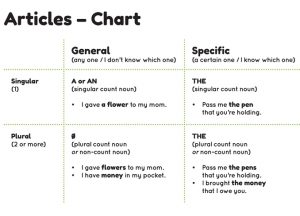
The Parable of the Wheat and the Tares. Articles: definite and indefinite. A grammar lesson for Christians

Означений артикль (the) використовується з предметами і явищами, які вже відомі слухачеві з контексту, ситуації. Також він часто вказує на унікальні, єдині у своєму роді предмети. Таким чином, означений артикль виділяє предмет з рядку подібних, його конкретизує.
Означений артикль також використовується з прикметниками в найвищому ступені порівняння.
Означений артикль може вживатися в узагальнюючому значенні, коли він відносить предмет до цілого класу предметів одного виду.
Означений артикль вживається з наступними власними іменами:
Астрономічні назви: the Sun, the North Star
Географічні назви: the South Pole, the Hague, the Crimea
Гірські ланцюги: the Alps, the Urals
Річки: the Thames, the Oka
Моря і океани: the Baltic Sea, the Atlantic Ocean
Частини світу: in the North, to the West
Канали: the Panama Canal, the English Channel
Назви деяких країн: the USA, the Netherlands, the United Kingdom
Національності: the Russians, the Americans
Пустелі: the Sahara, the Gobi
Райони міст: the Bronx, the City
Назви закладів, унікальних будівель: the Kremlin, the White House
Назви судів: the Queen Elizabeth
Назви газет: the Times, the Guardian
Сім’ї: the Ivanovs, the Forsytes, the Simpsons
***
Неозначений артикль (a/an) походить від числівника one і використовується, як правило, з обчислювальними іменниками.
Невизначений артикль класифікує і узагальнює, ніколи не конкретизує, натомість просто відносить предмет до певного класу або групи предметів. Неозначений артикль в узагальнюючому значенні означає, що предмет є представником якогось класу, і все, що про нього сказано в реченні, можна віднести і до інших предметів цього класу.
***
Якщо артикль має чисельне значення, то у множині його можна замінити на неозначені займенники some (в стверджувальних реченнях) чи any (в питальних і заперечних реченнях). Залежно від контексту їх можна перекласти як «декілька», «кілька», «ніякі» тощо.
Practice
Exercises from the handout
Production
Complete the gaps and check it as a whole class.
The Parable of the Wheat and the Tares
24 Another parable He put forth to them, saying: “The kingdom of heaven is like a man who sowed good seed in his field;
25 but while men slept, his enemy came and sowed tares among the wheat and went his way.
26 But when the grain had sprouted and produced a crop, then the tares also appeared.
27 So the servants of the owner came and said to him, ‘Sir, did you not sow good seed in your field? How then does it have tares?’
28 He said to them, ‘An enemy has done this.’ The servants said to him, ‘Do you want us then to go and gather them up?’
29 But he said, ‘No, lest while you gather up the tares you also uproot the wheat with them.
30 Let both grow together until the harvest, and at the time of harvest I will say to the reapers, “First gather together the tares and bind them in bundles to burn them, but gather the wheat into my barn.”
